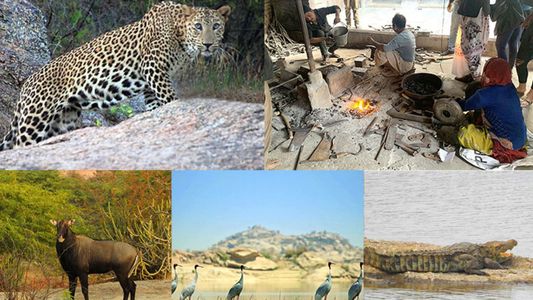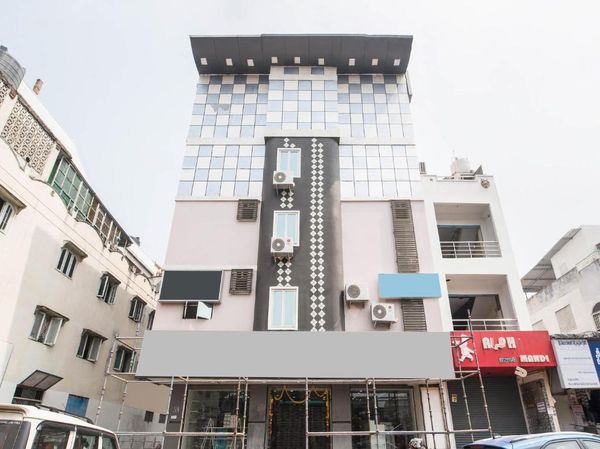Leopards in the Wild: Exploring the Untamed Beauty of Jawai National Park
 Palakshi Meharwal
06 May, 2025
9 mins read
310
Palakshi Meharwal
06 May, 2025
9 mins read
310

Nestled in the rugged terrain of Rajasthan’s Pali district, Jawai National Park is a rare sanctuary where wildlife and local communities coexist in remarkable harmony. Far from the commercial safari circuits of India, this unique ecosystem—centered around the granite hills of Jawai Bandh—is most famous for its thriving population of wild leopards. In fact, it is one of the few places in the world where leopards live so close to human settlements, yet peaceful interactions prevail.
In this article, we delve into the mystique of Jawai’s wild leopards, the geological wonders that shape their habitat, and what makes this destination a hidden gem for nature lovers and wildlife photographers.
The Jawai Landscape: Nature’s Camouflage Masterpiece
Unlike the dense forests that typically house big cats, Jawai offers a starkly different setting. The terrain is composed of granite hills, cave systems, and scrub vegetation that has evolved over millennia. These weathered rock formations provide the perfect camouflage for leopards, who use the labyrinthine caves for shelter, breeding, and stalking prey. This rocky expanse allows them to blend into the landscape with such precision that spotting one requires patience, keen eyesight, and, ideally, the guidance of a skilled local tracker.
The leopards of Jawai are uniquely adapted to this environment. Unlike in other reserves, where tree cover is dense and opportunities for ambush are many, leopards here rely on the boulders and their acute sense of hearing and vision to hunt. The arid, open terrain gives visitors unusually high chances of sighting these elusive cats, especially during dawn and dusk safaris.
Human-Wildlife Coexistence: A Model of Mutual Respect
What sets Jawai apart is not just its terrain or wildlife, but the social fabric of its human population. Predominantly inhabited by the Rabari community—traditional pastoralists who have lived here for generations—Jawai demonstrates a rare coexistence between people and predators. Despite leopards often passing through villages or resting on hilltops above homes, incidents of conflict are surprisingly rare.
This peaceful coexistence can be attributed to the Rabaris' cultural beliefs. Many locals consider leopards to be protectors, spiritual beings that should be respected, not feared. Livestock losses are often accepted as acts of nature, and the community refrains from retaliatory actions. Their reverence for wildlife has become the cornerstone of Jawai’s conservation success story.
The Leopard Population and Conservation Status
According to recent field surveys and reports from conservation organizations such as the Wildlife Conservation Society (WCS) and Nature Conservation Foundation (NCF), Jawai hosts an estimated 50–60 leopards within a 100-square-kilometer radius. This density is significant, especially considering the absence of a formally declared wildlife sanctuary until recently.
The Rajasthan Forest Department, recognizing the ecological and tourism value of the region, has made strides toward protecting this biodiversity. Conservation efforts include regulating tourism, curbing illegal encroachments, and promoting community-based wildlife monitoring.
Wildlife Beyond Leopards
While leopards may be the showstoppers, Jawai is no one-species wonder. The region also supports a variety of other wildlife including striped hyenas, jungle cats, sloth bears, and Indian foxes. Birdwatchers will delight in the avian population at Jawai Dam, which becomes a haven for migratory birds in winter. Flamingos, cranes, and bar-headed geese are just a few of the seasonal visitors that grace the wetlands.
The flora is equally adapted to the arid climate—dominated by acacia, cactus, and euphorbia species. These plants provide shelter and sustenance to smaller fauna and maintain the ecological balance of the region.
Responsible Tourism in Jawai
Tourism in Jawai has grown steadily over the past decade, with luxury tented camps, eco-lodges, and jeep safari operators offering immersive wildlife experiences. However, sustainable tourism is the key to preserving the fragile harmony here. Many lodges now employ local guides, use solar power, and limit vehicle movement to minimize ecological disruption.
Visitors are encouraged to follow ethical wildlife viewing practices, including maintaining a respectful distance, avoiding loud noises, and not feeding animals. Engaging with the local Rabari community through guided village walks or cultural programs also supports the local economy while fostering deeper appreciation for their stewardship of the land.
When to Visit Jawai
The best time to visit Jawai National Park is between October and April, when the weather is cooler and the chances of wildlife sightings are highest. During this period, vegetation is sparse, making it easier to spot leopards along the rocky escarpments. Summers can be harsh, with temperatures soaring above 40°C, but even then, early morning safaris can offer rewarding encounters.
Getting There
Jawai is accessible via road from Udaipur, Jodhpur, or Mount Abu, each located within 150–200 kilometers. The nearest railway station is Jawai Bandh, which is connected to major cities in Rajasthan. For travelers seeking convenience, private transfers and tour packages are widely available through reputable travel agencies.
Photography and Ethical Wildlife Documentation
Jawai is a paradise for wildlife photographers. The interplay of light on the granite hills at sunrise and sunset offers dramatic backdrops for capturing leopards in their natural habitat. Ethical photography practices—such as avoiding flash, not baiting animals, and using silent shutters—are strongly recommended to ensure minimal disturbance.
Several award-winning wildlife photographers have documented Jawai’s leopards, bringing global attention to this lesser-known sanctuary. Their work has helped elevate Jawai as a conservation success story, drawing interest from researchers, conservationists, and responsible tourists alike.
Final Thoughts: A Sanctuary Like No Other
Jawai National Park is more than a destination; it’s a compelling narrative of coexistence, ecological richness, and timeless landscapes. In a world where human-wildlife conflict is escalating, Jawai offers a blueprint for balance—a living example that humans and large predators can, indeed, share the same land.
Whether you're a wildlife enthusiast, photographer, or curious traveler, witnessing leopards in the wild at Jawai is a humbling experience—one that deepens your understanding of nature’s quiet resilience and the intricate web that binds us all.
Written By:
Palakshi Meharwal



Hotels at your convenience
Now choose your stay according to your preference. From finding a place for your dream destination or a mere weekend getaway to business accommodations or brief stay, we have got you covered. Explore hotels as per your mood.


